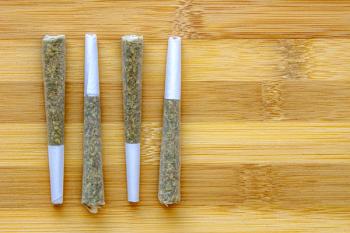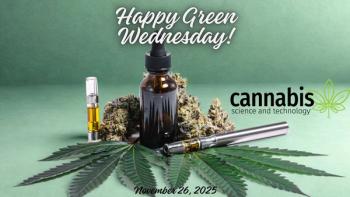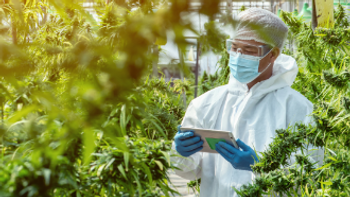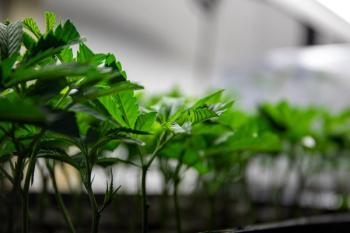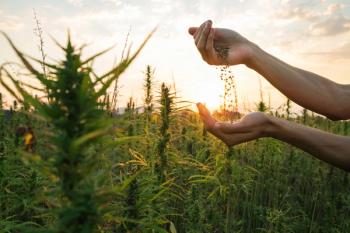
Cannabis Science and Technology
- November/December 2020
- Volume 3
- Issue 9
Resource Benchmarking for Competitive and Efficient Cannabis Cultivation and Production Processes

Understand what information to gather for cultivation operations, which KPIs are important, and how to interpret a performance benchmark.
Given the magnitude of the energy use in cannabis cultivation operations, resource benchmarking is especially important. Benchmarking is commonly performed for commercial and industrial buildings and is a crucial tool for determining baseline and efficient facility performance, allowing building managers and operators to measure facility performance year over year, and compare against similar properties. Cannabis operations are challenging to benchmark, but there are specialized tools that can measure key performance indicators (KPIs) for production and resource efficiency. By monitoring, quantifying, and ranking KPIs, cannabis businesses can become more efficient and competitive in changing markets. Understand what information to gather for cultivation operations, which KPIs are important, and how to interpret a performance benchmark.
Here you will learn what information to gather for benchmarking cultivation operations, which key performance indicators (KPIs) are important, and how to interpret a performance benchmark report.
Benchmarking is commonly performed for commercial and industrial buildings and is a crucial tool for determining baseline and efficient facility performance, allowing building managers and operators to measure facility performance year over year, and compare against similar properties. Given the magnitude of the energy use in cannabis cultivation operations, resource benchmarking is especially important. Just like financial benchmarking enables a comparative assessment of a firm’s performance, so does resource benchmarking for production processes.
Cannabis operations are challenging to benchmark, but there are specialized tools that can measure KPIs for production and resource efficiency. By monitoring, quantifying, and ranking KPIs, cannabis businesses can become more efficient and competitive in changing markets.
Resource Benchmarking Evaluates Competitive Performance
Established cultivators in various markets may be managing high operational expenses because of geographic region and real estate costs, site location and associated energy sources and suppliers, building type, and building systems such as lighting, heating, ventilation, and air conditioning (HVAC), and dehumidification. As businesses evaluate the cost-effectiveness of their
What gets measured gets managed. Resource benchmarking is the process of tracking and reviewing a property’s annual energy and water use over time in relation to itself or other buildings. Like stepping on a scale, energy benchmarking is the first step in a strategic energy management process (2).
Cannabis cultivation facilities are industrial and agricultural buildings, and are challenging to benchmark using traditional tools because of the diverse production activities performed within. Effective benchmarking for productive and profitable cannabis cultivation operations requires a specialized and vetted tool offering KPIs with a transparent and standardized calculation methodology. In commercial buildings, the U.S. Department of Energy’s Energy Star Portfolio Manager is often used to measure energy use intensity (EUI), a KPI measuring whole-building energy use in units of kBtu per gross square foot of building area.
To walk the walk of efficient production, operators must learn how efficiently they currently produce cannabis and use energy and water to establish a baseline. Continuously measuring against baselines on a recurring basis enables operators to measure and report performance as they improve efficiency over time. Benchmarking EUI for buildings and processes is crucial for determining baseline and efficient facility performance. Controlled environment agriculture processes are more challenging to assess using a metric based on building area alone (EUI), and production-oriented metrics are essential to include so competitive performance from operation to operation can also be understood on a basis of resource consumption per unit of final product.
Operators engaged in strategic energy management processes can compare facility energy and water efficiency and productivity values year-over-year for the same building—comparing you against yourself—and between buildings of the same type—comparing you against your peers to learn how changes in operational procedures, retrofit projects, and expansion into new space is affecting your bottom line.
Cannabis PowerScore: Specialized Benchmarking for Cannabis
As a non-profit advocacy organization, Resource Innovation Institute (RII) cultivates resource efficiency for a better agricultural future, and part of our mission includes providing objective, brand-agnostic education to the cannabis industry (3). A key element of RII’s market transformation work is our Cannabis PowerScore resource benchmarking platform (4). In 2017, RII brought together its initial Technical Advisory Council of cultivators, design and construction partners, and energy efficiency engineers to determine how to quantify the energy performance of cannabis cultivation operations. The group advised the development of the Cannabis PowerScore benchmarking platform and established cannabis-centric KPIs evaluating resource efficiency and productivity.
The Cannabis PowerScore benchmarking platform is a free, non-profit, peer-reviewed, and confidential suite of tools designed by and for cultivators and their construction partners. Detailed facility information is never sold or shared with anyone without consent. RII has built trust as an objective source of information about resource efficiency in cultivation operations and Cannabis PowerScore is used by hundreds of facilities throughout North America.
While individual facility information is anonymized, RII analyzes the aggregate Ranked Data Set to inform governments, utilities and industry leaders who share an interest in advancing producer efficiency with quarterly resource benchmarking reports (5). Ultimately, trends from PowerScore and these reports will help the industry establish standards and a leadership recognition system.
Key Performance Indicators for Efficiency and Productivity
The PowerScore platform includes a survey, visualizations, and dashboards for competitive performance reporting at the facility and portfolio level. The survey calculates comparative efficiency performance metrics using submitted facility details including building construction, building systems, and annual resource usage and production.
At the facility level, PowerScore provides a Performance Benchmark report for each year of facility performance that summarizes resource efficiency and productivity KPIs and an overall Facility Ranking against operations from the Ranked Data Set growing in similar environments (see Figure 1). Facility Ranking is a proxy for overall resource efficiency performance, and provides a holistic apples-to-apples comparison of cultivation facility competitiveness across similar cultivation approaches.
Performance Benchmarks report calculated KPIs for energy, water, waste and, soon, carbon emissions. Energy KPIs modify traditional EUI by using flowering canopy area instead of gross building area. Annual cannabis flower production is used to create new productivity KPIs by dividing production totals by annual consumption of energy and water and generation of waste.
Facility energy and water efficiency and productivity are critical KPIs that can measure both business competitiveness and brand risk:
• Facility Energy Efficiency: Annual energy use per square foot, in units of kBtu/sq. ft. of flowering canopy; energy use includes all energy sources such as electricity, natural gas, delivered fuels, backup generation, and renewable energy generation. A lower value is better; a higher value is worse.
• Energy Productivity: Efficiency of annual produced grams of dried cannabis flower per kBtu of total (all fuels) annual energy use using a facility’s annual production and whole-facility energy consumption totals. A higher value is better; a lower value is worse.
• Facility Water Efficiency: Annual water use per square foot, in units of gal/sq. ft. of flowering canopy. A lower value is better; a higher value is worse.
• Water Productivity: Efficiency of annual water use
in units of annual produced grams of dried cannabis flower per gallon. A higher value is better; a lower value is worse.
At the portfolio level, groups of facilities using similar cultivation approaches can be grouped together and compared against peer operations in the Ranked Data Set using competitive performance reports. Figure 2 is summarizing electric facility energy efficiency for several indoor, greenhouse, and outdoor operations (orange bars) and comparing them against the relevant groups of facilities in the Ranked Data Set (green bars).
Baselines for Electric Facility Energy Efficiency and Productivity
The Ranked Data Set of PowerScore helps cultivators understand baseline resource efficiency and productivity, and describes average performance among US producers in early regulated states to establish baselines for KPIs for comparisons and competitive reports. As more facilities benchmark with PowerScore, comparisons by climate zone will become feasible for even more accurate KPI comparisons across peer groups. Table I lists the 151 operations currently recorded in the Ranked Data Set and their average KPIs in October 2020.
Benchmarking Operations Using High-Performance Equipment
Success stories from the PowerScore Performance Benchmark reports are revealing the promise of efficiency investments. KPIs for some facilities seem to validate that certain techniques and technologies are driving efficiency. As one leading-edge example, an Oregon facility underwent a retrofit from high pressure sodium vapor (HPS) to light emitting diode (LED) lighting, which resulted in a 68% improvement in electric facility energy efficiency (g/kBtu).
Analysis of the aggregate Ranked Data Set suggests that most facilities, regardless of legacy equipment installed, have the opportunity to save at least 30% of energy expenses through efficiency measures. A recent RII benchmarking report showed that indoor cannabis cultivation operations growing with LED for flowering achieve 34% better average electric facility efficiencies and 80% better average electric production efficiencies than indoor facilities using double-ended (DE) HPS lighting for the flowering growth stage. However, some operations using LED lighting solutions perform better than other LED facilities due to cultivator techniques and actual environmental conditions in grow rooms.
Performance variability results from contributions of several factors including the quality of the lighting system, lighting controls, the limitations of the site, or the actions of the cultivator. Most long-term cannabis cultivators need to learn how to evaluate the state-of-the-art LED lighting solutions available on the market today and adapt to effectively install and operate them. Others are bound by the ability of their building’s HVAC systems to condition the internal space despite the quality of the building envelope, ductwork and piping, and ventilation equipment.
Producing cannabis efficiently with high-performance equipment like LED lighting systems is possible if cultivators and facility operators measure KPIs on a quarterly or annual basis. Benchmarking helps cultivators learn how they currently perform, and how they compare against their baseline performance benchmark and the average performance benchmarks of cultivators growing like them to quantify the benefits of efficient technology and prove the value of projects to investors. Get started on your efficiency journey at CannabisPowerScore.org.
References
https://www.cannabissciencetech.com/view/hvacd-controls-for-plant-health-product-quality-and-energy-efficiency-in-cultivation-and-drying-processes .https://www.burlingtonelectric.com/benchmarking .https://resourceinnovation.org/ .https://cannabispowerscore.org/ .https://resourceinnovation.org/press-release/study-of-cannabis-energy-use-shows-indoor-cultivation-operations-using-led-lighting-demonstrate-better-efficiency/ .
About the Columnist
Gretchen Schimelpfenig, PE, is the Technical Director of RII and manages the organization’s Technical Advisory Council. She is an LED-lit home cultivator. While serving Burlington Electric Department customers, she incentivized horticultural LED lighting equipment through energy efficiency programs, and has commissioned LED lighting designs and installed systems in commercial and industrial buildings, including greenhouses used for academic research on hemp and other cultivars. She authored the RII Best Practices Guides on HVAC and LED Lighting for Cannabis Cultivation and Controlled Environment Agriculture. She has a B.S. in Architectural Engineering from the University of Wyoming and an M.S. in Civil Engineering from Stanford University. She is a licensed Civil Professional Engineer in California and Vermont.
How to Cite this Article
G. Schimelpfenig, Cannabis Science and Technology 3(9), 15-20 (2020).
Articles in this issue
Newsletter
Unlock the latest breakthroughs in cannabis science—subscribe now to get expert insights, research, and industry updates delivered to your inbox.

